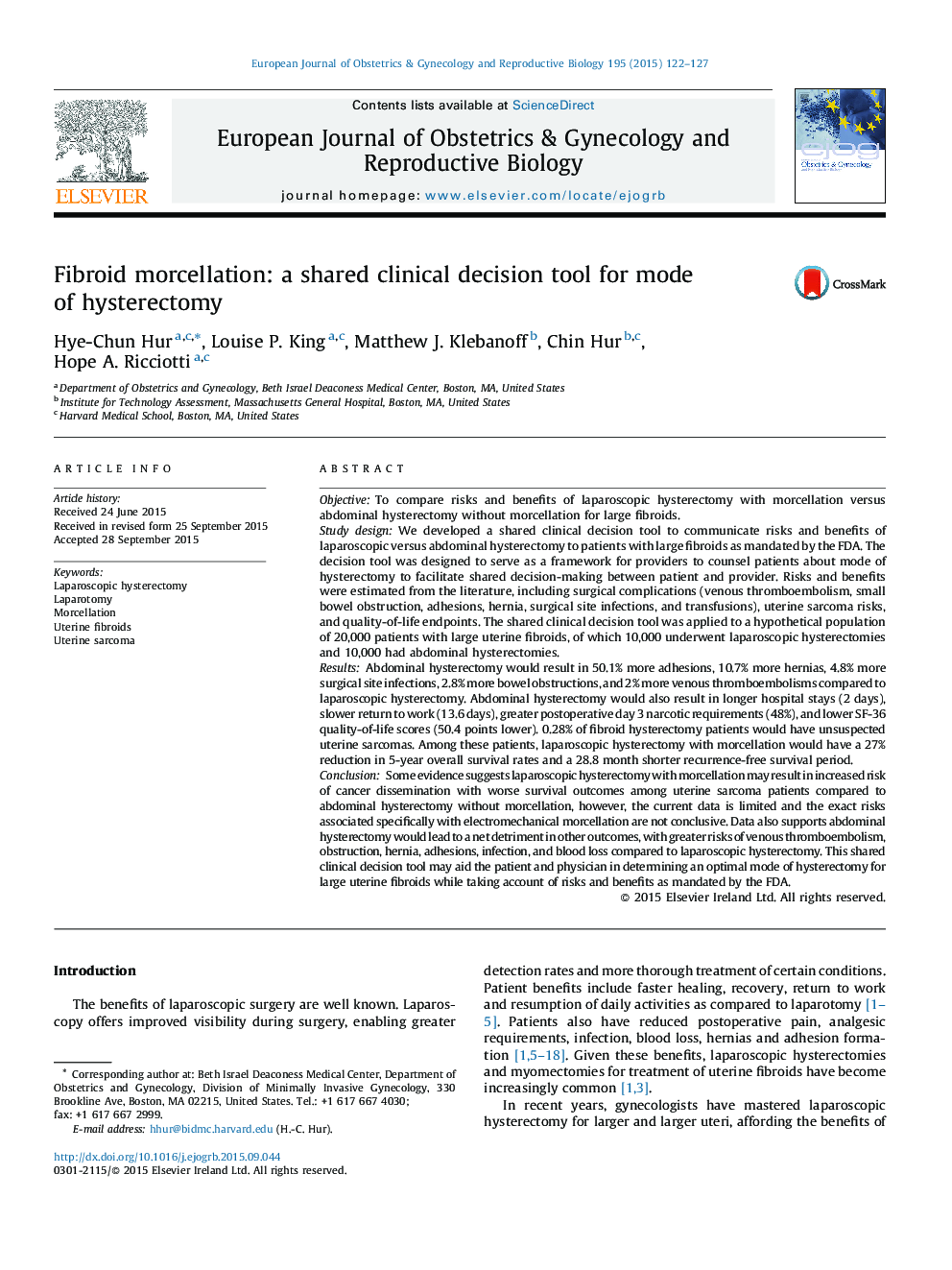| کد مقاله | کد نشریه | سال انتشار | مقاله انگلیسی | نسخه تمام متن |
|---|---|---|---|---|
| 3919563 | 1599786 | 2015 | 6 صفحه PDF | دانلود رایگان |
ObjectiveTo compare risks and benefits of laparoscopic hysterectomy with morcellation versus abdominal hysterectomy without morcellation for large fibroids.Study designWe developed a shared clinical decision tool to communicate risks and benefits of laparoscopic versus abdominal hysterectomy to patients with large fibroids as mandated by the FDA. The decision tool was designed to serve as a framework for providers to counsel patients about mode of hysterectomy to facilitate shared decision-making between patient and provider. Risks and benefits were estimated from the literature, including surgical complications (venous thromboembolism, small bowel obstruction, adhesions, hernia, surgical site infections, and transfusions), uterine sarcoma risks, and quality-of-life endpoints. The shared clinical decision tool was applied to a hypothetical population of 20,000 patients with large uterine fibroids, of which 10,000 underwent laparoscopic hysterectomies and 10,000 had abdominal hysterectomies.ResultsAbdominal hysterectomy would result in 50.1% more adhesions, 10.7% more hernias, 4.8% more surgical site infections, 2.8% more bowel obstructions, and 2% more venous thromboembolisms compared to laparoscopic hysterectomy. Abdominal hysterectomy would also result in longer hospital stays (2 days), slower return to work (13.6 days), greater postoperative day 3 narcotic requirements (48%), and lower SF-36 quality-of-life scores (50.4 points lower). 0.28% of fibroid hysterectomy patients would have unsuspected uterine sarcomas. Among these patients, laparoscopic hysterectomy with morcellation would have a 27% reduction in 5-year overall survival rates and a 28.8 month shorter recurrence-free survival period.ConclusionSome evidence suggests laparoscopic hysterectomy with morcellation may result in increased risk of cancer dissemination with worse survival outcomes among uterine sarcoma patients compared to abdominal hysterectomy without morcellation, however, the current data is limited and the exact risks associated specifically with electromechanical morcellation are not conclusive. Data also supports abdominal hysterectomy would lead to a net detriment in other outcomes, with greater risks of venous thromboembolism, obstruction, hernia, adhesions, infection, and blood loss compared to laparoscopic hysterectomy. This shared clinical decision tool may aid the patient and physician in determining an optimal mode of hysterectomy for large uterine fibroids while taking account of risks and benefits as mandated by the FDA.
Journal: European Journal of Obstetrics & Gynecology and Reproductive Biology - Volume 195, December 2015, Pages 122–127
